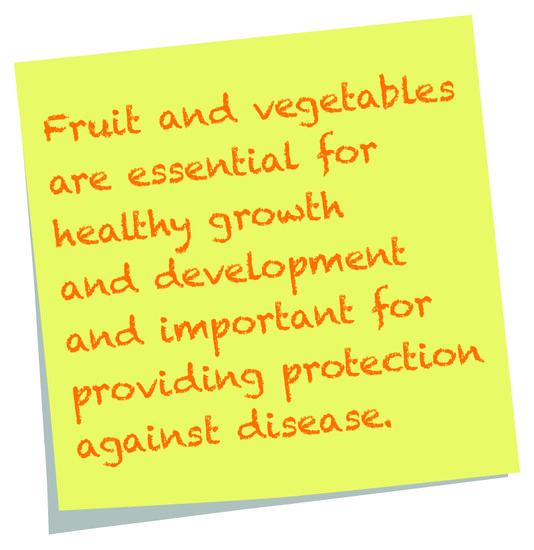There are reasons why many children are often willing to eat unhealthy 'junk' foods but less keen to eat healthy foods.

In recent years, increasing numbers of adults and children have developed health problems related to an unhealthy diet. A key recommendation is the Government's message that all children and adults should eat at least five portions of fruit and vegetables every day. However, recent research has found that an alarmingly small number of children actually achieve this.
Instead, what a lot of parents and professionals are finding is that children will willing eat unhealthy foods (crisps, biscuits, sweets, bread, cake etc) but are less willing to eat healthy foods, such as fruit and vegetables.
Eating an unhealthy diet puts children (and adults) at a greater risk of developing health problems or becoming overweight or obese.
Why are unhealthy food preferences a problem?
Children are born with a tendency to prefer sweet tastes and to dislike bitter tastes. Since many vegetables taste bitter, this is why they are often less popular.
The reason for the dislike of bitter tastes appears to be related to our deep-rooted tendency to be wary of foods that are not fresh. Humans seem to have an innate sense that sweet tastes indicate freshness and sour or bitter tastes indicate that a food is going bad.
Rejection of bitter tasting vegetables is a normal developmental response.
While it is normal for a child to reject foods like vegetables, this does not mean that this rejection should be accepted or ignored. It is important to support children in the learning process that is required to make these foods part of their diet. This has become much harder to achieve given the increase in attractive, yet unhealthy alternatives; many of which are targeted directly at children. This is worrying since an unhealthy diet in childhood is associated with a number of serious health problems including heart disease, type-2 diabetes, and cancer.
While some children who consume a very poor diet may remain a healthy weight, or even be underweight, a large proportion of children will be overweight or obese. Carrying too much or too little weight is associated with a number of significant negative social, psychological, and physiological effects.

What can I do to help children eat more healthily?
A healthy diet in childhood provides the foundation for good health in later life. We should all aim to eat at least 5 portions of fruit and vegetables a day. The best way to help to shape children's flavour preferences and establish a healthy diet is to expose them to a wide variety of healthy foods from an early age, and remove unhealthy foods and drinks from their environment. This might require a change in your usual routine, what you buy, and what foods you cook or eat yourself, but the benefits to your child's health will be well worth it.
Things to try
It is never too late to make changes to increase the quality of your family's diet, nor is it ever too early to educate your child on healthy eating.
- Healthy food is normal food
Healthy eating should be the norm. If your child is not familiar with healthy foods, then they are less likely to eat them. Make sure that you expose your child to healthy foods, not just at mealtimes but in a variety of different ways. See the food refusal pitfall section for more information. - Make yours a healthy home
Remove unhealthy foods and drinks from your home. If they are not there, they cannot be eaten. Remember that water is a perfect thirst quencher. See the restriction pitfall section for more on how best to limit children's intake of unhealthy foods and drinks. - Educate
Help children to understand the importance of what they put into their bodies and what special properties fruits, vegetables, dairy, and wholegrains have. There are now many games, available on games consoles or online, that are designed specifically for this purpose and that can help children to understand healthy eating in a way that they will find fun to engage with. - Cultivate
Teach children about healthy eating and natural foods by growing things together. Children will enjoy tending to plants and watching them grow and may be more likely to eat foods that they have grown themselves.